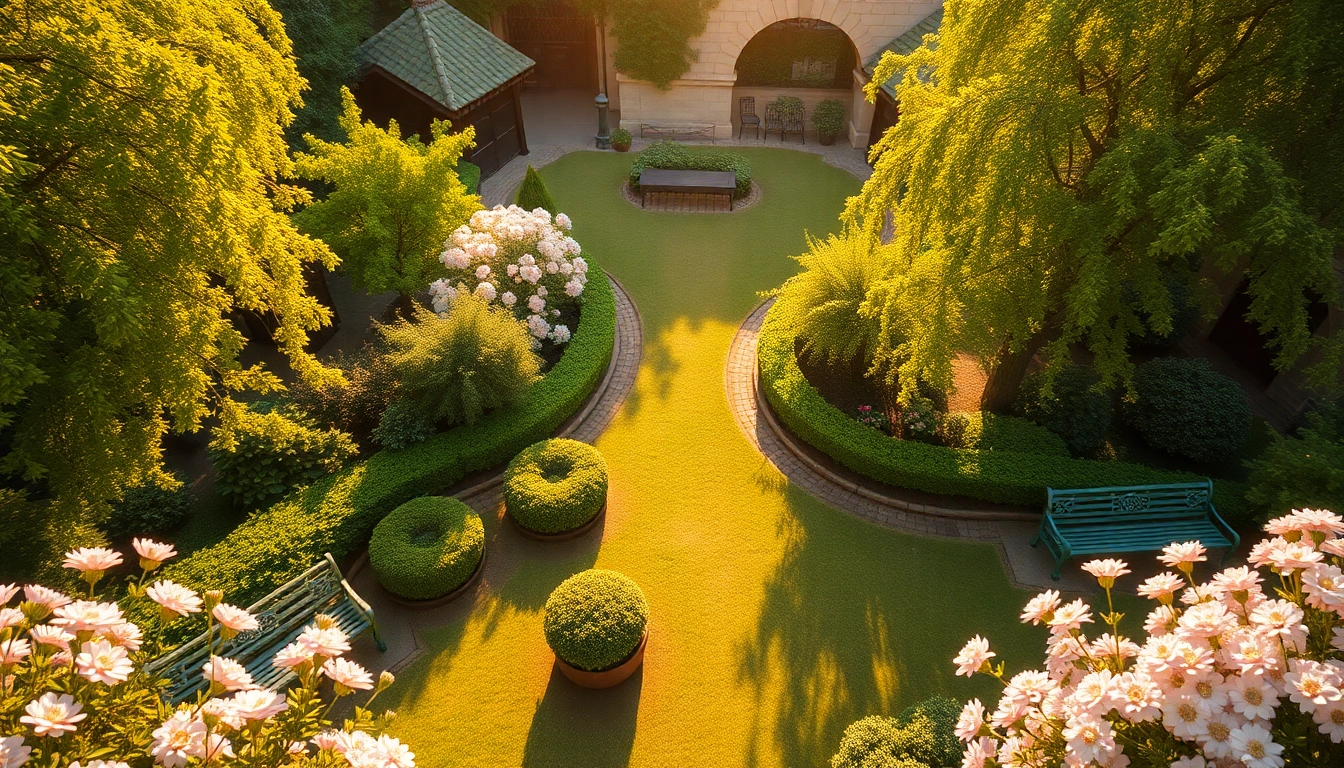Introduction to Bloomsbury
Bloomsbury, a vibrant district located in central London, is often overshadowed by some of its more famous neighbors. However, this area is a treasure trove of culture, history, and charm that deserves a closer look. Renowned for its beautiful Georgian architecture, literary heritage, and proximity to some of London’s most prestigious institutions, Bloomsbury offers visitors a unique experience that captures the essence of London life. Whether you are an art lover, a history buff, or simply looking for a tranquil retreat in the bustling city, the bloomsbury area has something for everyone.
What Makes Bloomsbury Unique?
What sets Bloomsbury apart from other districts in London is its rich tapestry of history and culture, coupled with a sense of place that is both welcoming and intellectually stimulating. The area’s literary pedigree is one of its most compelling attributes. It served as the home to many notable authors and thinkers, including Virginia Woolf, T.S. Eliot, and George Bernard Shaw, all of whom contributed to the Bloomsbury Group—a collective that brought together some of the brightest minds of the early 20th century.
Additionally, Bloomsbury is home to fascinating shops, delightful cafés, and a wealth of green spaces, making it an ideal balance of urban life and nature. The intrinsic character of Bloomsbury lies in its historic significance and cultural vibrancy, ensuring that every corner of it tells a story.
The Historical Significance of Bloomsbury
Historically, Bloomsbury was developed in the 17th century, initially as a marshland that faced extensive urban development under the guidance of a few prominent landlords, notably the Bedford Estate. The late 18th and early 19th centuries saw the construction of many of the elegant Georgian-style buildings that define the area today. Bloomsbury has a rich connection to academia, being home to University College London (UCL) and the School of Oriental and African Studies (SOAS).
The district played a pivotal role during the literary revolution of the early 20th century, which was marked by the emergence of influential writers and thinkers who gravitated towards the area and congregated in various salons and meetings. Along with being a center for intellectual thought, Bloomsbury also became an important venue for social movements, including suffragette activities, shaped by its residents’ progressive ideologies.
Overview of Attractions in Bloomsbury
Bloomsbury is brimming with attractions that cater to a diverse range of interests. The British Museum stands as one of the most significant landmarks, housing an extensive collection of global artifacts that tell the story of human civilization. Beyond the museum, visitors can explore several lush gardens, such as the beautifully maintained Russell Square and the hidden gems of St. George’s Gardens. Art enthusiasts will also appreciate the plethora of galleries and cultural institutions that are part of Bloomsbury’s charm, providing a feast for the senses throughout the year.
Exploring Bloomsbury’s Famous Landmarks
Visit the British Museum in Bloomsbury
The British Museum, one of the most visited museums in the world, is a must-see attraction located in Bloomsbury. Established in 1753, the museum houses a vast collection of over 8 million works dedicated to the history of mankind—from ancient civilizations through to the modern era. Visitors can marvel at the Rosetta Stone, the Elgin Marbles, and a plethora of Egyptian mummies, all without paying an entry fee, making it an accessible cultural experience.
Not only is the collection impressive, but the building itself is a stunning architectural feat. The Great Court, designed by Sir Norman Foster, features a spectacular glass roof that creates a vibrant and airy atmosphere, perfect for wandering and reflecting on the treasures housed within. Guided tours and educational workshops further enhance the experience, making it ideal for families, tourists, and school groups alike.
Architectural Wonders of Bloomsbury
Beyond the iconic museums, Bloomsbury is an architectural showcase of styles and periods. The grandiose Georgian homes situated throughout the neighborhoods evoke the elegance of a bygone era. One notable building is the iconic Birkbeck College, whose striking façade and intricate details embody the spirit of higher education. Bloomsbury is also dotted with churches, such as the impressive St. Pancras Church, which showcases a beautiful combination of architectural styles from Neoclassical to Gothic Revival.
Exploring these buildings on foot offers a glimpse into the heritage of the area, particularly along the Bloomsbury Squares, where every turn reveals impressive architecture and stunning landscapes. The harmonious blend of green spaces and façades creates picturesque scenes that invite photography and leisurely exploration.
Cultural Institutions in Bloomsbury
In addition to the British Museum, Bloomsbury is home to a variety of cultural institutions that are deserving of exploration. The Wellcome Collection, for instance, merges science and art and provides a unique perspective through its exhibitions that explore health and human condition. Another cultural landmark is the British Library, which houses a collection of over 170 million items, including manuscripts, rare books, and newspapers dating back centuries.
The area is also known for its theaters, such as the Bloomsbury Theatre, which offers an eclectic program of performances, from contemporary plays to avant-garde productions. Furthermore, art galleries like the Charles Saatchi Gallery assure Bloomsbury remains at the forefront of London’s cultural offerings, making it an essential stop for art lovers and scholars alike.
Dining and Social Spots in Bloomsbury
Best Cafés and Restaurants in Bloomsbury
Bloomsbury’s dining scene is equally as compelling as its cultural offerings, boasting a diverse selection of popular cafés and restaurants. For a classic British experience, a visit to the iconic Coffee House Weekenders is a must. This charming café serves traditional English breakfasts and afternoon teas, where visitors can indulge in scones with clotted cream and jam.
For those craving international cuisine, Bloomsbury does not disappoint. The area is home to some outstanding eateries offering an array of flavors, including Italian trattorias, Asian fusion restaurants, and local gastronomic gems that feature seasonal and sustainably sourced ingredients. Thistletown and The Life Goddess are often cited as local favorites, providing delightful menus and cozy environments, perfect for unwinding after a day of exploration.
Nightlife and Entertainment Options
When the sun sets, Bloomsbury transforms into a vibrant nightlife hub. The area’s bars and pubs offer an eclectic atmosphere where locals and visitors mingle. From cozy, intimate pubs like the The Brasserie of Light to trendy cocktail bars like Bar Termini, there is something for everyone to enjoy. Many of these venues host live music events and art showcases, cultivating a sense of community where creative minds gather.
For those interested in theater, a visit to the local playhouses will provide an unforgettable experience. The rich tapestry of performances—ranging from classic Shakespearean plays to contemporary works—ensures a night out in Bloomsbury is lively and culturally enriching.
Hidden Gems: Locals’ Favorites
While the major attractions are certainly noteworthy, it is the hidden gems of Bloomsbury that often leave the most lasting impressions. Tucked away in quiet corners are quaint bookstores, such as the London Review Bookshop, which features a fantastic selection of literature and hosts events with authors. Art enthusiasts will also uncover secret gallery spaces displaying local creatives’ works that provide intimate insights into the contemporary art scene.
For a taste of local life, wander over to the charming bookstores and vintage shops lining the streets. Additionally, the lesser-known parks and gardens, like the serene Coram’s Fields, grant a peaceful retreat away from the city buzz, providing the perfect opportunity for relaxation and contemplation.
Accommodations in Bloomsbury
Options for Every Budget in Bloomsbury
Gifted with a diverse range of accommodation options, Bloomsbury caters to travelers on all budgets. From budget hostels to luxurious hotels, there is something to suit every traveler’s needs. Updated with contemporary amenities, chain hotels like the Hilton London and Royal National Hotel offer comfortable stays at reasonable prices, ideally located near major transit lines.
For those seeking mid-range options, delightful boutique hotels like the Bloomsbury Hotel and Montague on the Gardens provide an exceptional combination of comfort and style, often featuring on-site dining and exquisite décor. Booking in advance can often yield offers that make luxurious stays more accessible.
Short-term vs. Long-term Stays in Bloomsbury
For visitors planning a short getaway, Bloomsbury’s accommodation options can be quickly booked for convenient access to attractions. Many hotels and guesthouses provide deals for longer bookings, perfect for those looking to explore the area more deeply. Conversely, for longer stays, serviced apartments or self-catering accommodations might be the ideal choice, allowing travelers the freedom to cook and live locally while still enjoying the conveniences of hotel amenities.
Local Guesthouses and Boutique Hotels
For travelers seeking a more personal touch, local guesthouses and boutique hotels offer charm and character that larger hotels cannot replicate. Places like the Hazlitt’s Hotel and the Charlotte Street Hotel provide incredibly personalized service amid beautiful surroundings, often reflecting the unique history of Bloomsbury itself. Staying in such accommodations allows guests to immerse themselves in the local community and discover the city’s vibrant culture more intimately.
Tips for Enjoying Your Visit to Bloomsbury
Best Times to Visit Bloomsbury
Determining the best time to visit Bloomsbury can greatly enhance the experience. Spring (March to May) brings blooming flowers and pleasant weather, creating a picturesque setting perfect for outdoor activities in the numerous parks. The summertime (June to August) offers many cultural events and outdoor concerts but can also attract larger crowds. Autumn, particularly in September and October, is another delightful time to visit—a time when the leaves change the colors and the temperature remains moderate.
Winter, while colder, offers a different kind of charm with festive lights and seasonal decorations, allowing visitors to enjoy the seasonal atmosphere with less congestion.
Transportation Tips for Navigating Bloomsbury
Navigating Bloomsbury and the rest of London is an adventure in itself, thanks to the comprehensive public transportation systems. The London Underground is a reliable and efficient option, with several stations located conveniently within the borough. Buses and bicycles are also accessible, allowing visitors greater flexibility in exploring the surrounding areas. For those who prefer scenic routes, consider walking or undertaking guided walking tours to familiarize oneself with the district’s historic sites and hidden treasures.
Local Etiquette for Visitors to Bloomsbury
Finally, once you step into Bloomsbury, embracing local etiquette goes a long way in ensuring a pleasant visit. Londoners are typically polite, so a friendly greeting can create a positive exchange. If dining in a café or restaurant, it is customary to thank staff and be mindful of table manners. Keep in mind that tipping around 10-15% in restaurants is standard. Being respectful of the local community and their spaces—whether in parks or public transport—will enhance your overall experience in this culturally rich area.



